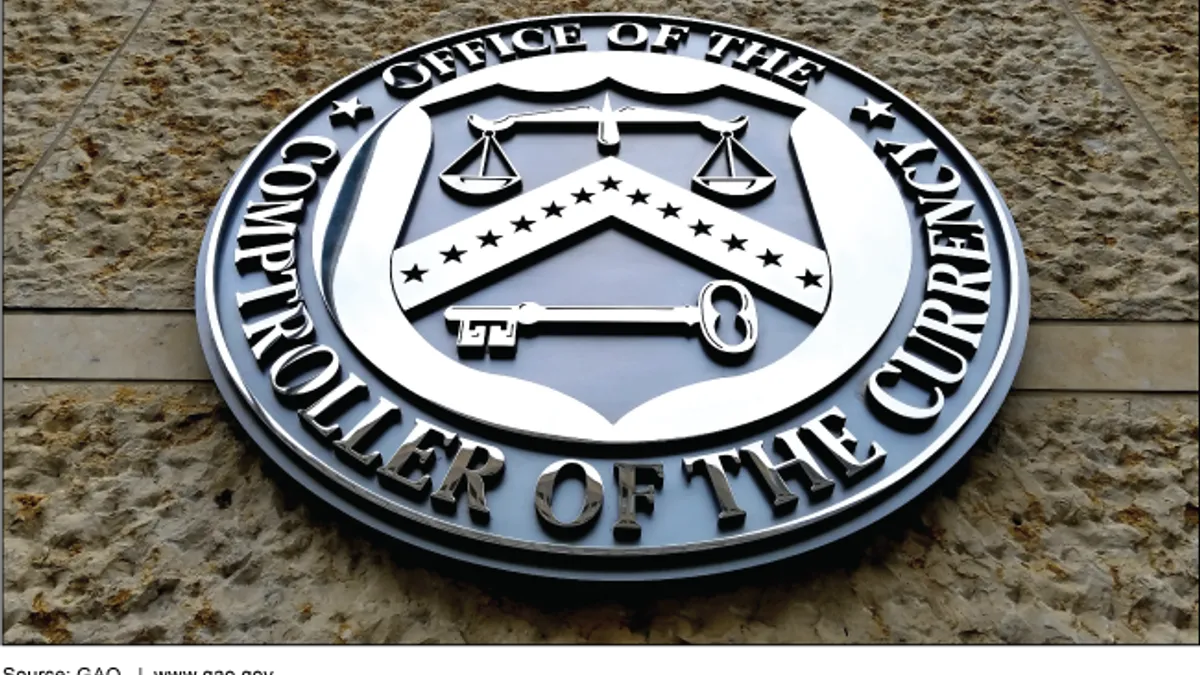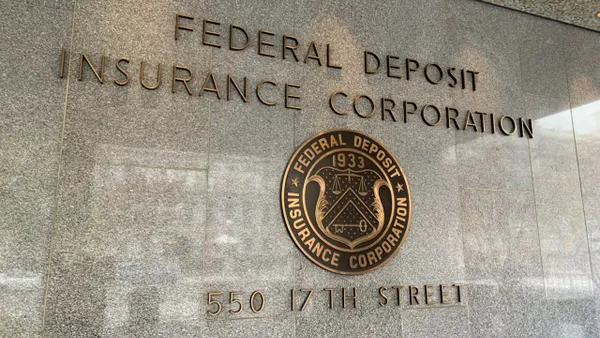The Federal Reserve, Federal Deposit Insurance Corp. and the Office of the Comptroller of the Currency issued a joint statement Thursday reminding banks that partner with crypto firms of heightened liquidity risks and the need for appropriate risk management related to that sector.
Thursday’s statement “does not create new risk management principles,” the regulators said.
As in a statement the Fed, FDIC and OCC released last month, the agencies emphasized that banks “are neither prohibited nor discouraged from providing banking services to customers of any specific class or type, as permitted by law or regulation.” The statement does not, however, detail what is or is not allowed, or under what justification.
While January’s statement served as a broader warning on the risk of fraud, legal uncertainties of crypto custody, misrepresentations by crypto firms and the threat of contagion, Thursday’s “reminder” focused on liquidity and volatility.
“Certain sources of funding from crypto-asset-related entities may pose heightened liquidity risks to banking organizations due to the unpredictability of the scale and timing of deposit inflows and outflows,” the regulators wrote Thursday.
The stability of deposits placed by a crypto firm “may be driven by the behavior of the end customer” or by dynamics within the crypto sector rather than by a crypto partner itself, the regulators warned. Periods of stress, market volatility and interconnected vulnerabilities may also affect stability, the agencies said. And end customers may react to crypto market events, media reports and uncertainty — perhaps stemming from misrepresentation by crypto firms — in ways that spur mass inflows and outflows, the regulators said.
While January’s warning mentioned stablecoins merely in relation to run risks, Thursday’s statement labeled deposits related to stablecoin reserves as a liquidity risk. The added spotlight could serve as a nod to action by other regulators against Paxos and its partnership with Binance. The New York Department of Financial Services ordered Paxos last week to stop minting a Binance stablecoin, and the Securities and Exchange Commission reportedly threatened to sue Paxos for violating investor protection laws.
Stability of stablecoin-linked deposits may hinge on market demand, confidence of stablecoin holders and the management of reserves by stable coin issuers, the Fed, FDIC and OCC said Thursday. Unanticipated stablecoin redemptions or dislocations can prompt rapid outflows, the regulators warned.
“When a banking organization’s deposit funding base is concentrated in crypto-asset-related entities that are highly interconnected or share similar risk profiles, deposit fluctuations may also be correlated, and liquidity risk therefore may be further heightened,” the Fed, FDIC and OCC said Thursday.
The regulators stressed that banks should actively monitor the liquidity risks tied to crypto-derived funding sources, assess any potential concentration of funding they may have in the sector, monitor representations their crypto partners may make to the market regarding funding, and incorporate liquidity risks into contingency plans, including stress tests for liquidity.











